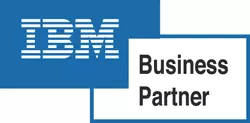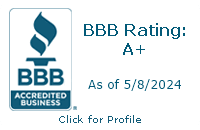Are you struggling to increase revenue? Find out what assets in your business inventory you may be overlooking.

Like all business owners, I have to look for ways to improve my business, and to maintain and grow my revenue stream. While thinking recently about ways to go about this, I had some interesting insights – and I thought I'd share some with you.
Assets – A Common (Mis)Perception

When business persons think of an asset, their thoughts typically go straight to the left-hand side of a balance sheet. What's there? All the usual suspects – cash, accounts receivable, work-in-process, inventory, property and equipment, and the like.
All of these are tangible assets, accounted for using historical costs. The cost (whether gross or net of depreciation) of an asset may or may not reflect the value of that asset.
Here's the thing about tangible assets – they're generally easy to reproduce, given enough money. Even so, two businesses can have virtually the same tangible assets, yet achieve very different results. How so?
Types of Hidden Assets
At Todd Herman Associates, we view business results coming from the alignment of People, Process, and Technology. The higher the alignment, the better the results – the lower the alignment, the smaller the results.
These three elements – People, Process, and Technology (PPT) – are not only hidden assets themselves, they are major contributors to other hidden assets.
As assets themselves ...
- Processes are the steps or activities required to yield a desired result. Processes consume resources, and they produce results.
- Technology is the means by which other assets are leveraged to produce results.
- People are those "squishy assets" (my term!) who both create and use process and technology for business advantage.
For a given group of tangible assets, the People using them, the Processes consuming them, and the Technology leveraging them – intangible assets make ALL the difference in results achieved from tangible assets. A company having one set of PPT can produce industry-leading results, while another company with virtually identical assets, yet different PPT, might yield middling results.
Other hidden assets created from tangible assets and PPT include, among many others:
- Brand names
- Customer and client lists and relationships
- Distribution networks
- Know-how
- Laboratory notebooks
- Location value
- Permits
- Prizes and awards
- Reputation
- Trade secrets
- Word of mouth
Intangible assets can be collectively referred to as "goodwill." Goodwill is generally believed to deliver above average earnings to a company, and thus command a premium when a business is sold.
Identify Your Hidden Assets
Because these assets are intangible, they are easy to overlook. How to find them? Here are some ideas:
- Ask Your People – After all, they are hidden assets themselves (since we can't own people), and they likely see the benefits of their work products.
- Use a List – Search the Internet for "list of intangible assets" and pick one of the many results as a starting point for your work.
- Set an Unrealistically High Goal – Rather than setting a realistic goal of coming up with, say, 10 hidden assets, set a VERY high goal such as 100 hidden assets! Just the large number itself will spur deeper and more creative thinking than a more achievable goal.
- Use a Strategy Map – This is a visual technique to link assets, processes, customer benefits, and financial results. A quick web search will yield further explanations and images of example strategy maps. Get our version of a strategy map here.
Just because these assets are hidden doesn't mean they can't be found – you just have to look harder. Even though these assets are intangible, they are likely your company's most valuable assets – making them worth the time and effort to find and develop them.
Sincerely,
![]()
Todd L. Herman
Helping Our Clients
We are pleased to provide an update on some of our current projects. Over this period, we have helped our clients ...
Improve Call Center Productivity
Increased call center representative productivity and improved workload monitoring by designing and developing new features and reports for a sophisticated call center workflow routing system.
Reduce Uncollectible Accounts by Addressing Root Causes
Lowered risk of uncollectible accounts, greater ease-of-use, better information, and 10-times faster process time by designing and prototyping an application to integrate two previously separate functions - verifying health insurance coverage, and collecting payments.
Launch a Sophisticated New Reporting System
Launched a new tool that lets customers tailor formatting and interpretative comments to their individual needs and preferences by completing the development of, and processing the first orders using, a sophisticated customized reporting system.
Easily Track Service Requests & Outcomes
Easily tracked processing outcomes of service requests, appeals, and grievances by designing, developing and deploying a Microsoft Access-based application for use by a small, yet rapidly growing, health care agency for senior citizens.
Prepare for Office 365 Migration
Reduced software costs, standardized of software versions, and enhance network management for this small business by moving to cloud-based offerings of Microsoft Office 365 and Windows Intune, assessing user needs based on tasks performed, and determining appropriate product subscriptions.
Resolve System Issues Affecting Job Workflow
Improved job workflow and reporting, and increased client satisfaction by working with client personnel and the software vendor to research and resolve or workaround limitations in this ERP (Enterprise Resources Planning) vendor's software.
Executive Dashboard Performance Tuning
Significantly reduced page load time for complex analyses by tuning key queries and aggregations of the OLAP (OnLine Analytical Processing) cube used in this executive dashboard, based on Microsoft SQL Server Analysis Server (SSAS).
Future Projects
In future projects, we plan to help our clients ...
Extend a Sophisticated New Reporting System to Other Products
A unique-value added offering in our client's highly competitive market by overseeing the full rollout of a client-focused reporting system, and quickly beginning to incorporate other new products and their related reporting.
Migrate to Office 365
Reduce hardware and operating system upgrades and costs, while improving the user experience with Microsoft's cloud-based software offerings, by conducting pilot tests for migration on several machines and software configurations, completing the plan for migration, and rolling out and troubleshooting this migration.
Control a Major Cost
Obtain better visibility of food usage and sales, and provide a solid foundation for future enhancements by overseeing the final development of a new operations system, and begin testing base functionality of this system for this growing restaurant chain.
Improve Operations Management
Improve management of revenue, drivers, trucks, and trailers by inventorying the data available from this fast growing transportation company's main systems, defining the types of questions this information could answer, and outlining options to achieve all of this.
Receive Better Information on Job Material Transactions
Provide better and more reliable information to shop and project managers by researching and documenting this ERP system's processing of job material transactions, and creating procedures and reports to workaround a limitation of this system.
Plan Next Steps for Executive Dashboard
Better planning and management of ongoing enhancements to a complex and comprehensive application by assisting in preparing scope documents for various enhancements to their data warehouse and related dashboard.





